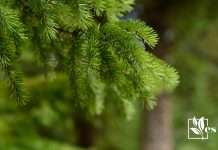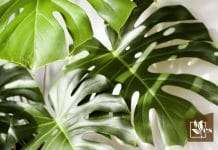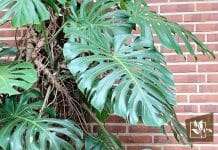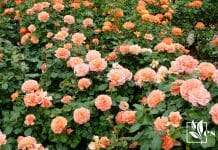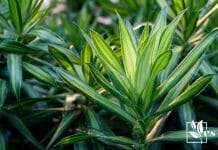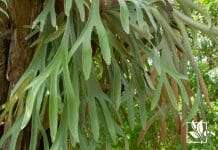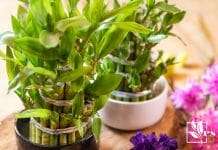White spots on snap peas are awful, as they may indicate that your peas are attacked by fungi. Well, the good thing is that you can help your pea plants so long as you know the cause of the white spots.
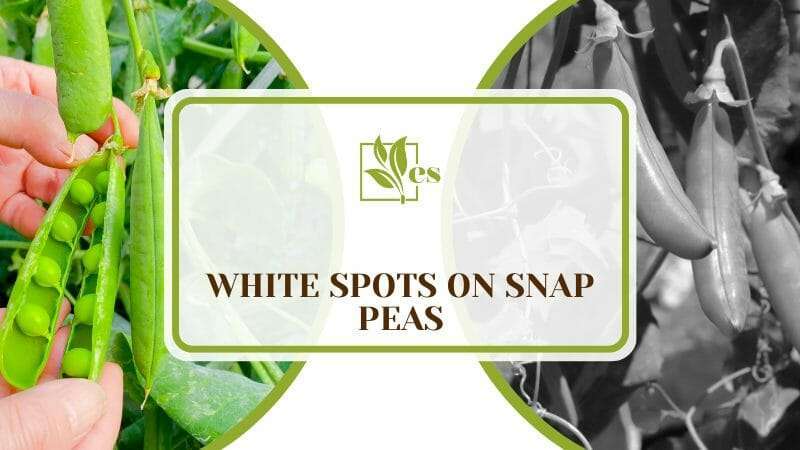
Read this article to learn why your pea plants have white spots and how you can help them.
JUMP TO TOPIC
Why Are There White Spots on Your Snap Peas?
There are white spots on your snap peas because of fungal diseases, lack of certain nutrients or even too many organic nutrients, light problems, humidity problems, insect pest attacks, viral and bacterial attacks or it could be the pods or seeds opening.
– Fungal Diseases
The most common reason why white spots appear on the leaves of plants including peas is the growth of different fungal species.
As soon as you see white spots on your sugar snap peas, think of fungi such as powdery mildew, downy mildew (not a true fungus), and root rot. The powdery mildew fungus is a popular one that causes white spots on your pea leaves.
Most of these fungi attack your peas when you are growing the peas in the wrong conditions. For example, powdery mildew attacks plants growing in a place with excessively high humidity while root rot attacks plants that grow in a water-logged substrate.
This means that you also want to check the growing conditions of your peas when you see white spots.
– Lack of Certain Nutrients
If you see white spots on your peas, check their fertilizer if there is enough iron, magnesium, and potassium. For other plants, the lack of nitrogen in the substrate can cause white spots to appear on their leaves.
However, lack of nitrogen does not usually affect peas, as they are in a symbiotic relationship with bacteria that give them nitrogen in exchange for energy.
When did you last feed your peas? What did you feed them? If your peas have a nutrient deficiency, you will most likely notice the white spots first on their lower leaves. The spots can also appear as yellow or pale-green.
– Too Many Organic Nutrients
If a lack of nutrients can cause white spots on the leaves of your peas, how do too many nutrients produce the same result? Well, it depends on the type of nutrients. If you feed your peas with too many inorganic nutrients, their leaves will turn brown and fall off.
However, organic nutrients can attract fungi and other microbes, so they will grow on and around your peas, making your peas appear white. White spots on peas caused by too many organic nutrients are mold. To confirm, use a rag to wipe them off. You can also confirm if the mold appears on the substrate and around the stem of your plant.
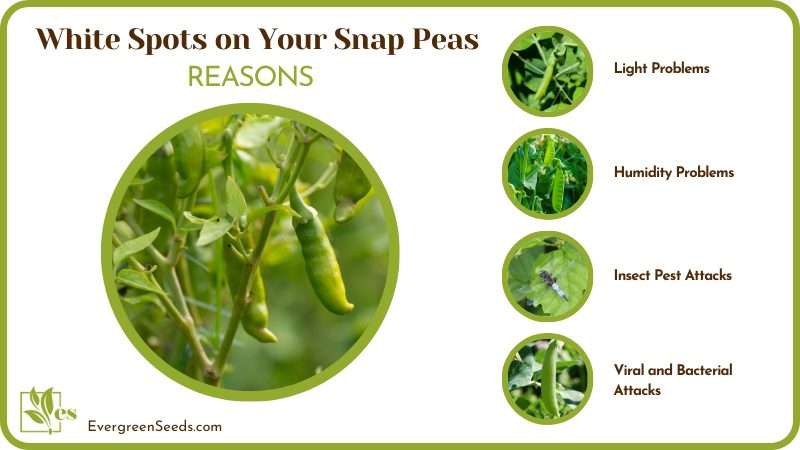
– Light Problems
The growing condition of your peas can give them white spots on their leaves. For example, plants produce green leaves with the help of the sun and other sources of light.
If there is not enough light, their leaves cannot turn green. In the absence of light, your pea leaves will turn pale and their paleness usually starts as spots.
Aside from the color of your pea leaves, you can also tell that your peas need more light when you see the pea shoots, stem, and petiole etiolated. They will look as if they are stretching toward the sun. Your peas will also grow very slowly until they die.
– Humidity Problems
Another growing condition that you must consider if you see spots on your snap peas is humidity. Humidity is usually ignored by a lot of gardeners, but snap peas and other plants rely on the humidity for water intake and transpiration.
Aside from plants, other organisms that rely so much on humidity to grow are fungi and bacteria. This is why microbes grow in humid places.
If you see powdery mildew fungus and other types of fungi on your snap peas, you should check the humidity level if it is too high for your peas or not.
High humidity can also trap water droplets in the leaves and these droplets can show as white or pale spots. This condition is known as plant edema.
– Insect Pest Attacks
What if the spots are caused by pests that eat sugar snap plants? Pests such as scale insects, spider mites, and aphids attack peas and they can appear as white spots (though mobile) on your pea leaves. The insects stated earlier suck nutrients and energy from your peas and do not give the leaves bite marks.
This means that if you see that your peas are weak and also have white spots, they may be attacked by pests. Other white insects that you should watch out for are weevils. These lay their white eggs on your peas and when the larvae hatch, they bite the leaves.
– Viral and Bacterial Attacks
What if the pests attacking your pea plants are those that you cannot see with your bare eyes? Even though you cannot see viruses and bacteria with your bare eyes, you will surely notice the spots that they cause. The pea enation virus and other types of viruses can cause white, yellow, or pale-green spots on your pea plants.
You should also consider the bacterial leaf spot which is a bacterium that attacks peas and other plants. The spots first appear as pale before they become brown or even black. These microbes can kill your peas, so you want to treat the plants as soon as possible.
– Could Be the Pods or Seeds Opening
The white spots on your snow peas may or may not be as harmful as you think. To indicate that your peas are ripening, white small tearing or scars may appear on the pea pods and even seeds.
If the spots on your snap peas only appear on the pods or seeds and not on their leaves or branches, you should not worry too much.
If the pods or seeds look pale and are falling before they ripen, it is a sign of phosphorus and potassium deficiency. Only spots or scars caused by ripening are safe for the plants.
How Do You Fix the White Spots on Your Peas?
To fix the white spots on your peas you can start by pruning the sick plants or make use of chemical pesticides if all else fails. Here are some more ways to treat your peas if they have white spots or to prevent them from getting white spots.
– Prune off Plants With White Spots
You should remove the leaves and branches with white spots immediately after you see them. Remove them so that the spots do not move to other leaves.
After pruning them, you can carefully look at the spots to know what they are and why they are on the leaves. If the spots are just on a single plant, you should remove the plant.
When pruning the leaves, please be sure to use clean tools so that you do not expose the plant to more microbes. Also, remember to clean the tools afterward so that you do not expose other plants to the agent causing white spots on the initial plant.
– Use Fungicides
Fungicides are products that you can use to inhibit the growth of fungi. They are very effective against fungi, so you can use them to rid your peas of fungi once and for all.
Well, you should be careful when selecting the fungicide to use. Remember that peas are legumes and legumes are in a symbiotic relationship with nitrogen-fixing bacteria. Be sure to use fungicides safe for peas.
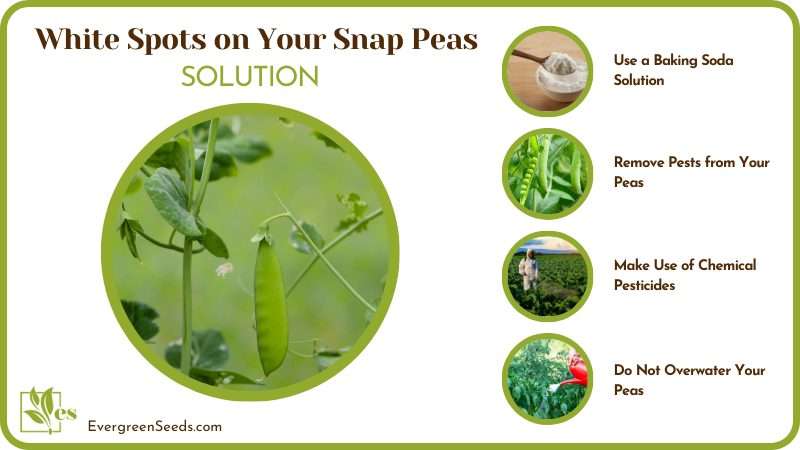
When spraying the fungicides, stick to the instructions. If you use too much at a time, you can harm your plants. If you use too little, you may not get rid of the fungi.
– Ensure That Your Peas Get Enough Light
To prevent your pea leaves from getting pale spots or turning pale, you should give them enough sunlight. Peas need six or more hours of sunlight daily for optimal growth, so be sure to grow them at a spot where they can get enough light.
In the summer months when the sun may be too hot for your peas, use a shade cloth to protect the plants from the afternoon sun. Note that even if peas can die due to insufficient light, they can also get burnt leaves and die due to too much light.
– Feed Your Peas Properly
What if the white, yellow, or pale spots on your peas are there because of nutrient deficiency? If this is your case, you can easily correct the spots by feeding your plants with fertilizer rich in the nutrients that they lack. To help your peas recover quickly, make use of foliar fertilizer as plants absorb the nutrients of foliar fertilizer quickly.
You should remember to amend your pea substrate with compost and other sources of organic nutrients so that your peas can have a healthy amount of nutrients in the type of soil you have. Remember to feed your peas once every month or two.
– Use a Baking Soda Solution
A baking soda solution is simply a mixture of baking soda and water. This solution may not look effective, but you can use it to control or even repel the population of fungi attacking your peas. Baking soda is made of the sodium bicarbonate compound which is effective against fungi.
You can also make use of the potassium bicarbonate compound which is more effective than baking soda. To make the solution, mix the baking soda or potassium with water and spray this mixture on the leaves of your peas. You can also spray the solution on the soil around the plants. Avoid spaying baking soda on plants and grass.
– Remove Pests from Your Peas
If the white pests attacking your peas are larvae of weevils, aphids, and other pests that you can remove with your hands, do not hesitate to remove them immediately after you see them. These pests will continue to harm your peas, so you do not want them to spend an extra second on your plants.
As soon as you remove the insects and other pests, squash them so that they do not return to the plants. If you want to throw them away, take them as far away from your peas as possible so that they do not return to harm your plants.
– Make Use of Chemical Pesticides
What if you have been trying to get rid of insects and other pests but have not been successful? In this case, you should use chemical pesticides.
These products will kill every insect disturbing your plants and repel insects from coming to your plants. Pesticides will also repel other invertebrates, so your peas will be safe from peas.
One con of using chemical pesticides is that these products are usually inorganic, so they are not suitable for organic gardens. Another con is that you can burn your plants if you do not follow the instructions that come with the products.
– Do Not Overwater Your Peas
To prevent your peas from getting attacked by fungi, you should not overwater them. Peas need water to grow, but not too much.
You should wait until the substrate of your peas is getting dry before you water them again. If your peas have had white spots on their leaves before, you should water them with dechlorinated water just in case their spots were caused by the use of hard water.
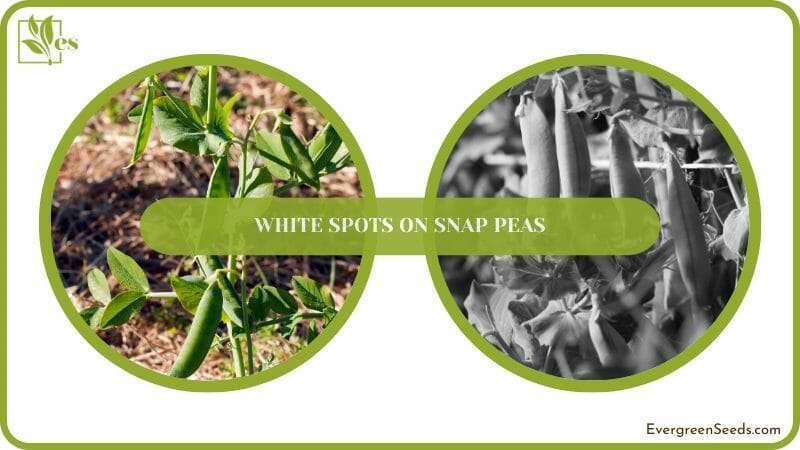
If you want to water your peas by misting, only mist them with water in the morning so that the excess water can evaporate off the leaves before noon. Do not allow water to stay on the pea leaves or in the soil for a very long time.



